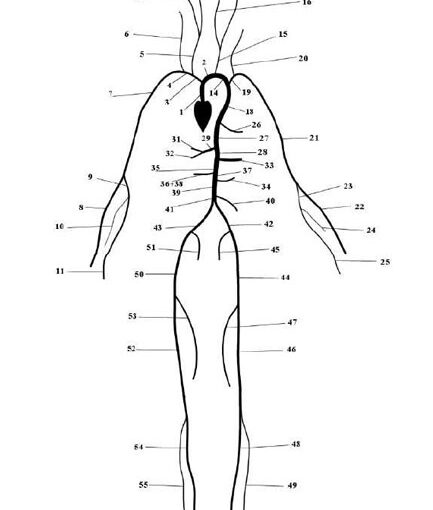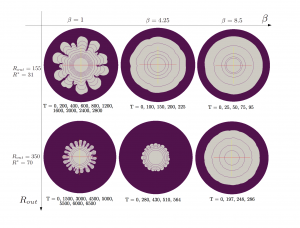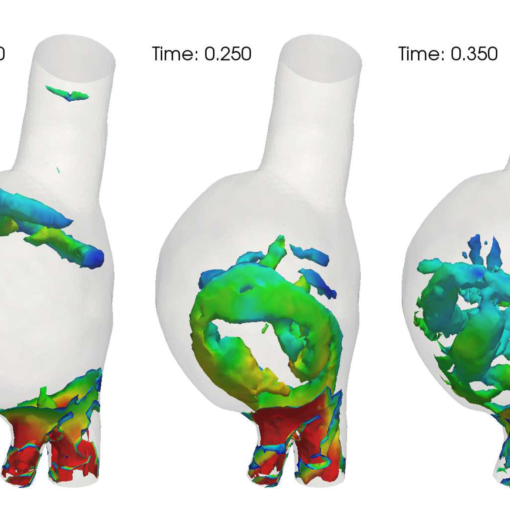Cardiac deformations are described by the equations of continuum mechanics, where the myocardium is considered as orthotropic, hyperelastic, and incompressible with passive properties defined by an exponential strain energy function.
Several studies have underlined the mechanical importance of the alignment of cardiac cells and of the structure of collagen sheets. This is an essential mechanical characteristic of the myocardium because it determines the ability of the ventricle to twist and swell correctly during the filling phase.
From a modeling point of view, these findings indicate the need of a mechanical constitutive law, that would account for two preferred directions: fibers and sheets directions.
Reaserch focused on the description of the systolic phase of the cardiac cycle. The active contraction of the muscle fibres can be mathematically described by two different approaches: active stress and active strain.
Some mathematical and biological instances of these two strategies have been examined in different works: frame invariance, ellipticity of the stress tensor and compatibility with the expected physiological behaviour.
Another topic concerns the study of reduced order models for the cardiac mechanics, because of the significant computational cost of the numerical simulations.



Publications:
1. D. Ambrosi, G. Arioli, F. Nobile and A. Quarteroni, Electromechanical Coupling in Cardiac Dynamics: The Active Strain Approach, SIAM J. Appl. Math., 71(2), 605–621, 2011
2. D. Ambrosi and S. Pezzuto, Active Stress vs. Active Strain in Mechanobiology: Constitutive Issues, Journal of Elasticity, 107(2), pp 199-212, 2012
3. F. Nobile, A. Quarteroni and R. Ruiz-Baier, An active strain electromechanical model for cardiac tissue, Numerical Methods in Biomedical Engineering, 28(1) , pp 52-71, 2012
4. S. Rossi , R. Ruiz-Baier, L.F. Pavarino and A. Quarteroni, Orthotropic active strain models for the numerical simulation of cardiac biomechanics, Int. J. Numer. Methods Biomed. Engrg. , 28 pp 761-788, 2012
6. S. Rossi, T. Lassila, R. Ruiz-Baier, A. Sequeira and A. Quarteroni, Thermodynamically consistent orthotropic activation model capturing ventricular systolic wall thickening in cardiac electromechanics, European journal of mechanics, in press, 2013
8. S.Pezzuto, D.Ambrosi and A.Quarteroni, An orthotropic active strain model for the myocardium mechanics and its numerical approximation, European Journal of Mechanics A/Solids 48, pp.83-96, 2014
9. Bonomi, D.; Manzoni, A.; Quarteroni, A.
A matrix discrete empirical interpolation method for the efficient model reduction of parametrized nonlinear PDEs: application to nonlinear elasticity problems, MOX Report 14/2016
Thesis:
1. S. Pezzuto, Mechanics of the heart: constitutive issues and numerical experiments, Ph.D. thesis in Mathematical Engineeing – MOX, Dipartimento di Matematica, Politecnico di Milano – 2013. Advisors: D. Ambrosi
2. M. Moretto – Modellizzazione numerica del ventricolo sinistro tramite sistemi di equazioni algebrico-differenziali – BSc in Mathematical Engineering – Politecnico di Milano – Advisor: L. Formaggia – A.A ’12-’13



